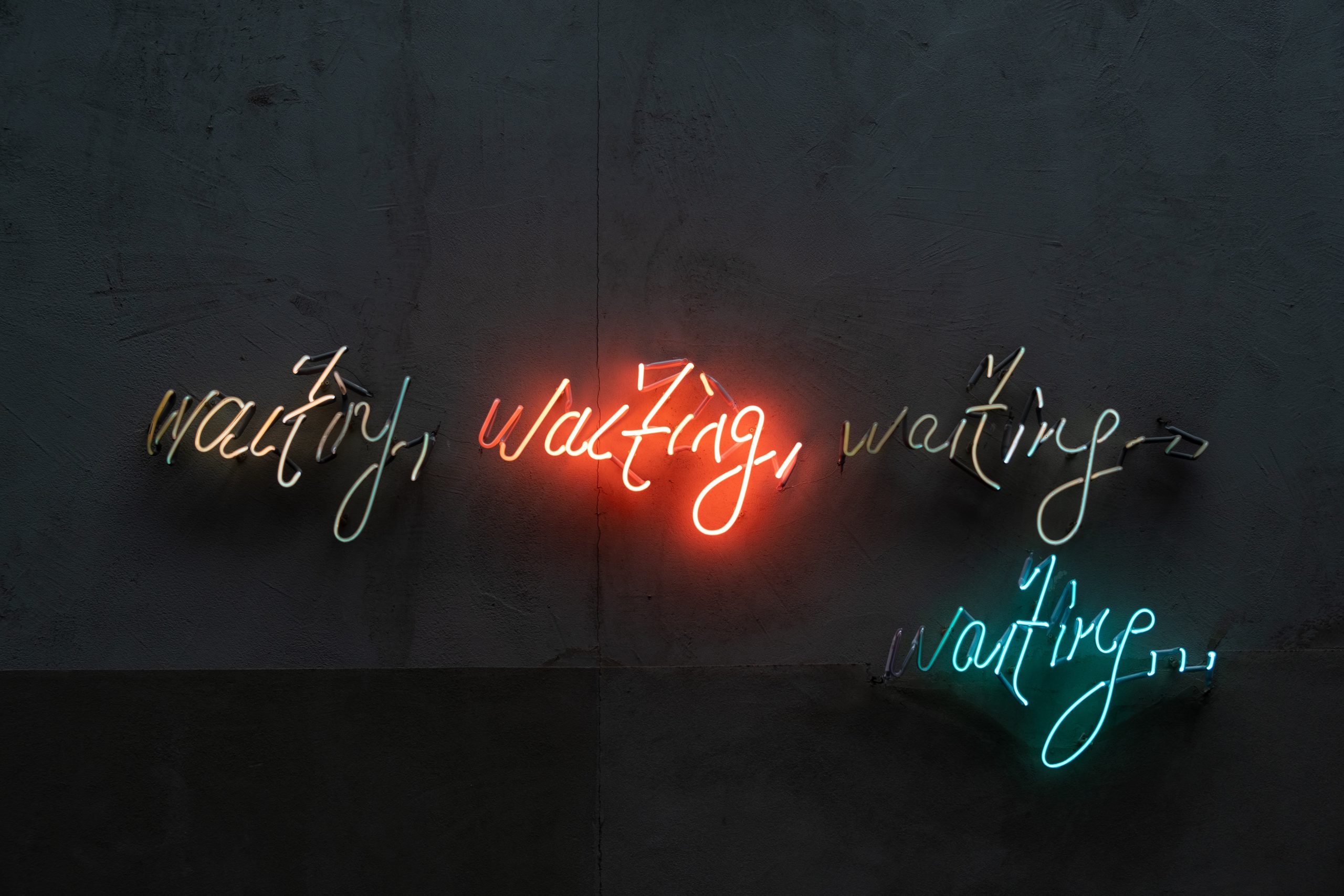When starting out on a new research project, it’s easy to get caught up in the details — what method will you use? How many participants do you need? What font will you use in your presentation? And, while these are (mostly) important, they ignore the most crucial question of all — why does this research matter? At the end of the day, the point of a research study is to help change something in an organization. To make a decision. To build greater understanding. To identify a new opportunity. Keeping that change, or impact, in mind at all times is critical to building a research project that matters.
To ensure that this impact remains a top priority throughout the process, I build my research plans backwards. I start with the impact I want to have, the question I’d need to answer, and the output I’m working toward. Only then do I consider the how and the what for the data I need to collect.
It might seem a little strange at first, asking a researcher not to think about the data. But by focusing on the impact, we can make the entire planning process smoother and more focused. We can ensure that everyone is bought in on the impact we’re trying to have — long before we’ve invested the time and energy required to run the study. We can bring collaborators along more effectively. If everyone understands where we’re going, they’re better empowered to make decisions to help us get there. Finally, by having a clear idea for what we’re trying to achieve, we can be confident that we’ve chosen the best and most cost-effective approach for our data collection.
To quickly build a “backwards” research plan, I use the acronym BROAD — Business goal, Research question, Output, Approach, Data. The Business goal should describe the impact you want to have on the business with your work – what changes as a result of this study? The Research question, by contrast, should describe the specific question you need to answer to inform that business decision. The Output describes what you intend to deliver at the end of the research to achieve the business goal. Only after these are in place should you commit to an Approach – the specific methodology or analysis you’ll use – and the specific Data you’ll collect.
- Business Goal – What changes in the business as a result of this work?
- Research Question – What question(s) do you need to answer to inform this goal?
- Output – What should the output of the research look like to achieve this?
- Approach – What type of methodology or analysis is required for that output?
- Data – What specific data will you need to collect to answer your research question?
To get a better sense of what a BROAD research plan might look like in an applied setting, check out this template, which you’re free to use and adapt to your needs. Or, if you want a little more detail on how to use this approach effectively, read on for further tips about building an impactful backward research plan.
—
When I first started out in research, I never wrote research plans… I jumped straight into designing the study. Walking out of a stakeholder meeting, I’d already be writing the study questions in my head. As a result, I often defaulted to methodologies I was most familiar with. I also often found myself writing study questions that had little to do with the actual research question. And, worst of all, more than once I found myself at the end of a study without a clear grasp on what the point was of what I had just done.
At the time, I considered writing a research plan to be a chore – something that a manager required so that they could have visibility into my work. I often used to put off writing the research plan until I was nearly done with the questionnaire or discussion guide. But over time I’ve come to embrace the actual writing of the research plan as the most important component of the research. It provides both the time, space, and – perhaps most importantly – buy-in, to ensure that my project is going to land the way I want.
Ensuring impact
Sitting down and making space to write my research plan allows me to really hone in on what matters – what the research is supposed to achieve. Writing this idea down, clearly and concisely, helps me maintain this focus over the days, weeks, and months of work that follows. Putting the impact statement at the top of every document — from the initial plan to the final output — makes sure that everyone I talk to knows what the point is. It also makes it easier to assess my impact after the fact, and to explain that impact in performance reviews.
Building alignment
Slide decks and conversations can be a great way to brainstorm or quickly convey information, but they can also hide a host of sins. By forcing myself to write down a research plan from start to finish, I can think through all the details of my work and ensure that each piece logically flows from the next.
It also ends up being a great way to achieve alignment between me and my stakeholders – asking for feedback on the plan ensures that everyone is on the same page about the why and the how of the research. This is especially critical for longer-term research and research that requires collaboration across multiple functions. Unwelcome surprises are much less likely when everyone has agreed to the plan.
Picking the right tool
One of the most critical skills for a researcher is picking the right research methodology for the question. By writing out the entire plan, and clearly stating how the methodology will achieve the research goals, it’s a lot easier to identify methodological mis-matches. This is especially useful when I’m not sure what the right approach is. Writing the plan – then socializing it with a variety of researchers – helps me spot new approaches that I may not have considered before and has even helped me to find new collaborators and mentors willing to teach me more about them.
Just enough data
Whether you are in a well-funded research organization, or a scrappy team of one, data is a precious commodity. Collecting just the right amount of data is not just best practice, it’s often a regulatory expectation. Writing down my research plans gives me a clear guide on exactly what information I need to answer my business questions. This has also proved useful for explaining why I needed to collect the data to others after the fact, when the need arose.
—
Simply crafting a research plan that covers the why, what, and how can be enough to achieve the benefits I’ve outlined above. But to ensure your research will have the desired impact you want, it’s best to start from the outcome and work backwards to the research itself. This is why I recommend starting with the Business Goal – what will change in the business if the research is successful.
This sounds simple enough, but the truth is that it can take some practice. It’s a good idea to have a consistent approach to writing research plans — so you can continually grow and iterate on your skills. Over time, thinking this way will become second nature… but still write it down! Even after hundreds of studies, seeing my thinking reflected in writing has saved me from making poor logical leaps more times than I can count.
So let’s put BROAD into practice with a few examples:
Business Goal
When writing the business goal, consider why your stakeholders would care about this research. Think about the desired impact of your study – what does this work enable that wouldn’t have been possible without it? Typically with research, this involves making a decision or changing our understanding of a space. Note that the research alone likely won’t be sufficient to achieve the business goal, though it should play a critical role in informing the change. Some examples of a business goal might include:
- Prioritizing a set of features, markets, or audience segments
- Investing in a new opportunity area
- Halting or pivoting on a product direction
- Deciding between multiple features or experiences
- Creating a measurement for a KPI or goal
Research Question
The research question should describe the specific inquiry your data will answer to inform the business goal. Think about the critical piece (or pieces) of information your decision-maker will need to enact the change you described in the business question. Then describe it in a way that can be answered with data.
For example, if the business question involves prioritization (“Prioritize a set of features for our productivity tool”), your study will likely need to measure something about the relative value of the options (“What are the greatest unmet needs for productivity among our core audience?”). Some examples of a research question might include:
- What are the biggest pain points for our product?
- What is the market size for this opportunity area?
- What is the impact of this product on user trust?
- Which of our prospective feature has the highest value to users?
Inevitably, you will need to break this question down into smaller sub-questions. Let’s use our “unmet needs” research question as an example. There’s a lot of assumptions baked into that question that we need to untangle. Some ways we might further break it down so that it is answerable by our study:
Example Research Question: What are the greatest unmet needs for productivity?
Sub-questions:
- How often does each need occur in their work?
- How well are they able to meet each need in their current work?
- How important is each need to their work?
Output
Now it’s time to think about the end state of your study. This is often referred to as the “deliverable”, the thing you’ll hand to your client or stakeholder when the project is complete. Deliverables can take a lot of shapes – videos, documents, and presentations are all common in research. But this is a good time to stretch yourself to think beyond that standard research template to really consider what you need to achieve the impact you’ve outlined in the business goal.
Consider both who will be using your research and exactly what impact you want it to have on their thinking. What format can you put your insight in that will most effectively plug into that process? Think about the smallest version of your output that could achieve that impact – whether it’s an image, a slide, a framework, or a 5-second clip of a video. Then build the rest of your thinking around getting to that single output. (For some inspiration on this topic, check out my post on thinking through deliverables.)
Some examples of this might include:
- Data-rich user personas for each target audience
- A journey map, highlighting key pain points at each step
- A 2×2 matrix with opportunities prioritized by frequency and satisfaction
- A highly produced highlight real showing key pain points
- A prioritized list of drivers, stack ranked by importance
Approach
Finally, it’s time to decide how you are going to collect your data. No doubt you’ve already started thinking about this when you crafted your research question. A well-written research question will imply a solution, which is why it’s so important to make sure you have the right question before you decide on a methodology. Similarly, by thinking through the output, you’ve likely started to think about methodological trade-offs, including whether more qualitative or quantitative approaches will achieve your goal.
This section should clearly state what methodology you are choosing and outline the primary details of that methodology. Consider things like region, population, sample size, and key methodological choices. For example, if your study involves interviews, will you conduct them remotely or in-person? Is the interview structured, semi-structured, or unstructured? For a quantitative study, what type of statistical analysis do you intend to run? Include enough detail that another researcher could look at your work and provide good feedback on whether this approach is methodologically sound based on your goals.
Data
Now, and only now, it’s time to start writing your research instruments. If you’ve followed the steps above, you probably already have a rough outline of your project in your head. I typically use the research sub-questions to shape the sections of my questionnaire, diary study, or discussion guide. Using these as a starting point, I can think through exactly what data I need to collect to answer that question. And, bonus, if you’re working with a vendor or agency, you may even be able to stop at this point and hand it off to them to work out the details of the study.
Working from the end of a research plan might feel unintuitive at first but with time, it’s likely to become second nature. By using the BROAD framework, you can ensure that each phase of your planning flows logically from the next. And by getting it all down on paper, you can easily drive alignment with partners and identify any potential flags long before they become an issue for your team. Feel free to start applying the BROAD template in your own work — and let me know how it goes!
Genevieve Conley Gambill is a pathfinder and strategist with over ten years of experience advising top tech companies on preparing for the future. Her blog, tiny-data.tech, is aimed at helping researchers deepen their strategic impact and future thinking. You can find more from Genevieve on LinkedIn and Twitter.



